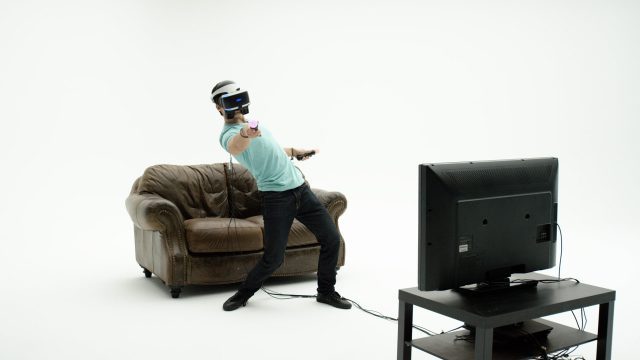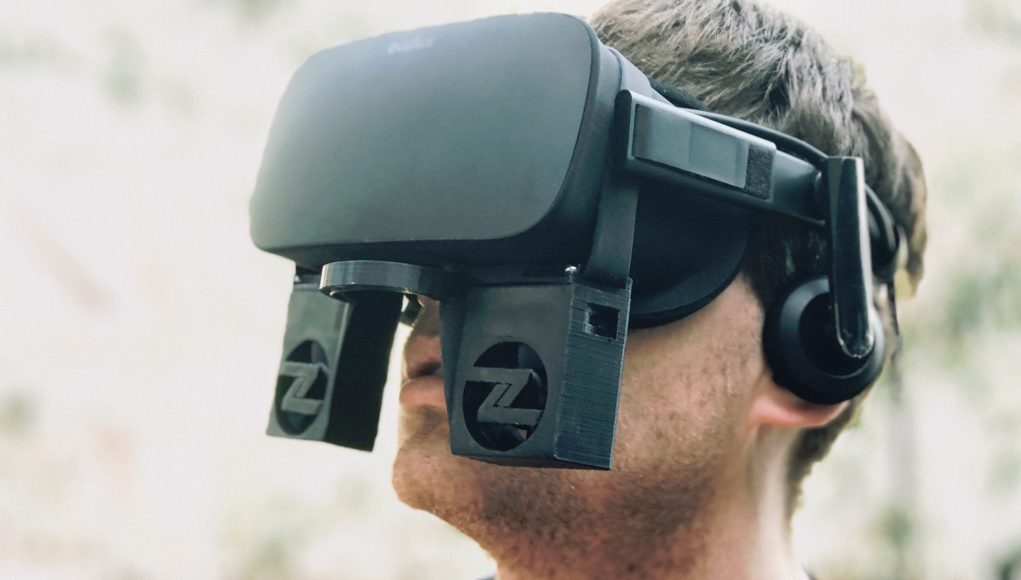Launched on November 2nd, the crowdfunding campaign for ZephVR, a VR fan accessory that “adds realistic wind at the right moments” achieved its $30,000 goal on Kickstarter in just a few hours, with 30 days remaining in the campaign. VR hardware startup Weasel Labs aims to deliver the first ZephVR units to customers in May 2018.
As described on the campaign page, ZephVR is designed to work with all VR games and experiences by reacting to audio cues, using machine learning to trigger the two fans at appropriate moments, i.e. traveling at speed, or when a bullet whistles past your ear. If the cue is louder in one audio channel, one fan will spin faster.

This audio-based approach—if it works well—means the hardware should function with all VR headsets; the PSVR-compatible version is more expensive, as it requires an additional audio processing box and cable. There is a cheaper version for just Oculus Rift and HTC Vive: the ‘earliest bird’ version going to the first 150 backers for $50. At the time of writing, some ‘early bird’ offers remain, but the full price appears to be $90 for the Vive/Rift version and $120 for the PSVR/Vive/Rift version.
ViveNchill—a simpler dual-fan device meant to keep players cool—also managed a successful crowdfunding project via Indiegogo in July, and recently began shipping to backers. ZephVR’s two fans can also be run at a constant rate for cooling rather than reactive ‘wind’, but hanging below the headsets rather than above might make it less effective as a cooling solution compared to ViveNchill.
According to the campaign page, ZephVR has the potential to improve over time as the software recognises more specific audio cues, and Weasel Labs hopes to “team up with game developers to create customized experiences for their games,” meaning that more precise fan activation could be supported in the future with direct integration into VR experiences.
The video above gives a visual example of how the algorithm detects the sound of wind in the game Windlands. The text scrolling on the left is red when the fan isn’t active and green when it is; the left stream represents the left fan and the right stream represents the right fan.







